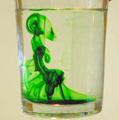


 The March winner of the Director’s Carbon Cycle 2.0 Building Energy Savings Challenge goes to the Building 90 Complex, whose occupants organized and collaborated to reduce energy use 17 percent over the past 12 months from an FY 2008 baseline. Second place goes to Building 62 with a 14 percent reduction, and third place goes to Building 55 with a 10 percent reduction. Each month, the Energy Challenge will honor the top three Berkeley Lab buildings with the greatest improvements in energy savings. The building with greatest improvement after six months will be treated to a lunch for the entire building, hosted by Lab Director Paul Alivisatos. More>
The March winner of the Director’s Carbon Cycle 2.0 Building Energy Savings Challenge goes to the Building 90 Complex, whose occupants organized and collaborated to reduce energy use 17 percent over the past 12 months from an FY 2008 baseline. Second place goes to Building 62 with a 14 percent reduction, and third place goes to Building 55 with a 10 percent reduction. Each month, the Energy Challenge will honor the top three Berkeley Lab buildings with the greatest improvements in energy savings. The building with greatest improvement after six months will be treated to a lunch for the entire building, hosted by Lab Director Paul Alivisatos. More>
 Employees interested in sharing engaging science activities with local students are invited to participate in an upcoming workshop, "Convection: A Current Event." Participants will learn how to guide sixth graders in an exploration of convection currents in liquid and air, and the role of convection in weather, wind, volcanic eruptions, diffusion of scent, and other natural phenomena. The workshop — part of the Lab's Center for Science and Engineering Education Berkeley Lab in School Settings (BLISS) program — takes place on Monday from 11:30 a.m. to 1:30 p.m. in Building 7-211. Registration is required and lunch will be provided.
Employees interested in sharing engaging science activities with local students are invited to participate in an upcoming workshop, "Convection: A Current Event." Participants will learn how to guide sixth graders in an exploration of convection currents in liquid and air, and the role of convection in weather, wind, volcanic eruptions, diffusion of scent, and other natural phenomena. The workshop — part of the Lab's Center for Science and Engineering Education Berkeley Lab in School Settings (BLISS) program — takes place on Monday from 11:30 a.m. to 1:30 p.m. in Building 7-211. Registration is required and lunch will be provided.
 World of Science: Radiation Expert Makes, Sells 'Stein of Science' to Keep Beer Cold
World of Science: Radiation Expert Makes, Sells 'Stein of Science' to Keep Beer Cold [Bloomberg] What Phil Broughton, a radiation safety specialist at UC Berkeley, wants to discuss is beer: specifically, a stein crafted from lab equipment normally used to keep liquid nitrogen so cold it doesn't boil off into vapor. Beer will stay perfectly frosty for days if left alone in the vessel, he says. That discovery has turned into a business for the 34-year-old, who began selling high-tech mugs for as much as $375 last year. Broughton's first customer was a colleague, former Berkeley Lab employee and UC Berkeley x-ray crystallographer Antonio Dipasquale, who purchased a 4.3-liter stein. More>
 The Environment, Health and Safety Division reminds never to leave salvage electronic components outside without making sure they are properly covered. If not covered, rainwater can wash contaminants into the storm drain system and creeks. The picture at left shows an example of properly covered electronic materials placed on a wooden pallet and covered with transparent plastic film, available here. Go here for more on Berkeley Lab’s e-waste policy, or contact Charlotte van Warmerdam (x7579). Contact Tim Bauters (x5831) for more on storm water protection.
The Environment, Health and Safety Division reminds never to leave salvage electronic components outside without making sure they are properly covered. If not covered, rainwater can wash contaminants into the storm drain system and creeks. The picture at left shows an example of properly covered electronic materials placed on a wooden pallet and covered with transparent plastic film, available here. Go here for more on Berkeley Lab’s e-waste policy, or contact Charlotte van Warmerdam (x7579). Contact Tim Bauters (x5831) for more on storm water protection.
Today at Berkeley Lab encourages comments, suggestions, and story ideas. Please send them here.
TABL is produced by Public Affairs' Communications Group